-
 Bitcoin
Bitcoin $117900
0.31% -
 Ethereum
Ethereum $3766
0.28% -
 XRP
XRP $3.176
-0.31% -
 Tether USDt
Tether USDt $1.000
0.00% -
 BNB
BNB $795.6
1.51% -
 Solana
Solana $186.8
-1.09% -
 USDC
USDC $0.9999
-0.01% -
 Dogecoin
Dogecoin $0.2353
-1.33% -
 TRON
TRON $0.3226
1.49% -
 Cardano
Cardano $0.8172
-1.08% -
 Sui
Sui $4.178
3.06% -
 Hyperliquid
Hyperliquid $43.05
-3.39% -
 Stellar
Stellar $0.4367
-0.57% -
 Chainlink
Chainlink $18.62
1.47% -
 Hedera
Hedera $0.2828
6.63% -
 Bitcoin Cash
Bitcoin Cash $584.7
5.65% -
 Avalanche
Avalanche $24.81
2.53% -
 Litecoin
Litecoin $112.8
-0.88% -
 UNUS SED LEO
UNUS SED LEO $8.975
-0.08% -
 Shiba Inu
Shiba Inu $0.00001395
-1.07% -
 Toncoin
Toncoin $3.285
-1.05% -
 Ethena USDe
Ethena USDe $1.001
0.01% -
 Polkadot
Polkadot $4.123
0.76% -
 Uniswap
Uniswap $10.49
-0.18% -
 Monero
Monero $326.5
0.14% -
 Dai
Dai $0.9999
-0.02% -
 Bitget Token
Bitget Token $4.576
0.34% -
 Pepe
Pepe $0.00001247
-1.55% -
 Cronos
Cronos $0.1400
3.77% -
 Aave
Aave $295.1
-0.73%
How to combine the time symmetry window to capture the precise turning point of the change day?
Traders use the time symmetry window to pinpoint cryptocurrency market shifts, analyzing past cycles to predict change days and enhance trading precision.
Jun 10, 2025 at 06:36 pm
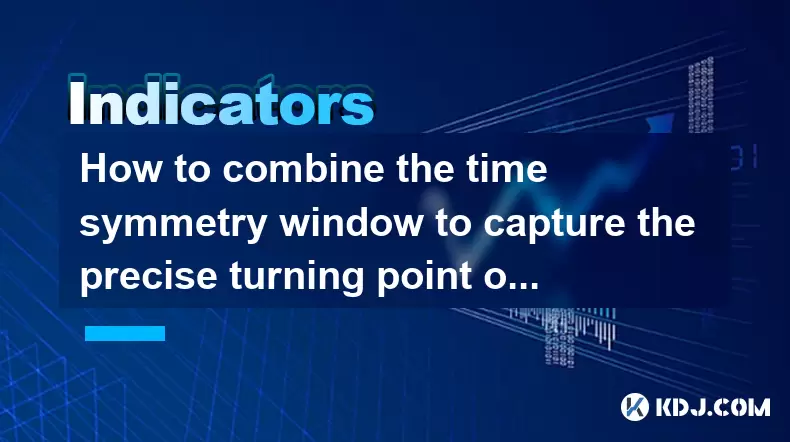
In the world of cryptocurrency, timing is everything. Traders and investors often seek to pinpoint the exact moments when the market is about to shift, enabling them to make more informed decisions. One method that has gained attention in the crypto community is the use of the time symmetry window to capture the precise turning point of the change day. This technique involves understanding and applying the concept of time symmetry to identify potential reversal points in the market.
Understanding Time Symmetry in Cryptocurrency
Time symmetry refers to the concept that market movements often exhibit a symmetrical pattern over time. In the context of cryptocurrency, this means that the duration of an uptrend might be mirrored by the duration of the subsequent downtrend. By recognizing these patterns, traders can anticipate when a change in market direction might occur.
The idea of time symmetry is not new to financial markets, but its application in the fast-paced world of cryptocurrencies has become increasingly popular. The key to using time symmetry effectively is to identify the length of previous market cycles and use this information to predict future turning points.
Identifying the Change Day
The change day is the point at which the market transitions from one trend to another. This could be from a bullish to a bearish trend or vice versa. Identifying the change day accurately can be challenging, but it is crucial for those looking to capitalize on market shifts.
To identify the change day, traders typically analyze historical data to find patterns in the length of previous cycles. For instance, if a previous bullish trend lasted for 30 days before a bearish trend began, traders might look for a similar pattern to predict the next change day. This approach requires careful observation and analysis of market data over time.
Applying the Time Symmetry Window
The time symmetry window is a specific period during which traders expect the market to make a significant turn. This window is determined based on the analysis of past market cycles and the application of time symmetry principles.
To apply the time symmetry window effectively, traders need to follow a systematic approach. Here's how they can do it:
- Analyze historical data: Start by reviewing past market cycles to identify the length of bullish and bearish trends. This can be done using charting tools and historical price data.
- Calculate the symmetry window: Once the lengths of previous cycles are known, calculate the expected duration of the current cycle. This will help determine the time symmetry window.
- Monitor the market within the window: Pay close attention to market movements as the time symmetry window approaches. Look for signs of a potential reversal, such as changes in volume, price action, or technical indicators.
- Confirm the turning point: If a significant market turn occurs within the time symmetry window, confirm it using additional analysis techniques, such as candlestick patterns or momentum indicators.
Tools and Indicators for Precision
To enhance the accuracy of the time symmetry window approach, traders often use various tools and indicators. Some of the most commonly used include:
- Fibonacci time zones: These are vertical lines on a chart that represent potential turning points based on Fibonacci ratios. They can help traders identify the time symmetry window more precisely.
- Elliot Wave Theory: This theory suggests that market movements follow a predictable pattern of waves. By understanding these waves, traders can better anticipate when a change day might occur.
- Moving averages: These can help smooth out price data and highlight potential trend changes. Crossovers of different moving averages can signal a turning point within the time symmetry window.
Practical Example of Using the Time Symmetry Window
To illustrate how the time symmetry window can be used in practice, consider the following example:
Suppose a trader is analyzing Bitcoin (BTC) price data and notices that the last bullish trend lasted for 45 days, followed by a bearish trend of the same duration. Based on this information, the trader calculates that the next time symmetry window will be around 45 days from the start of the current trend.
As the 45-day mark approaches, the trader closely monitors the market. They observe that the volume starts to increase, and a bearish candlestick pattern forms just within the time symmetry window. This confirms the trader's suspicion that a change day is imminent. They decide to take a short position, anticipating a downward move in the market.
Challenges and Considerations
While the time symmetry window can be a powerful tool, it is not without its challenges. One of the main difficulties is the unpredictability of the cryptocurrency market. Even with careful analysis, there are no guarantees that the market will follow the expected pattern.
Additionally, traders must be aware of external factors that can influence market movements, such as regulatory news, macroeconomic events, or significant announcements from major cryptocurrency projects. These factors can disrupt the time symmetry window and lead to unexpected market turns.
To mitigate these risks, traders should always use the time symmetry window in conjunction with other analysis techniques. This multi-faceted approach can help confirm potential turning points and increase the likelihood of successful trades.
Frequently Asked Questions
Q: Can the time symmetry window be used for all cryptocurrencies?
A: While the time symmetry window can be applied to any cryptocurrency, its effectiveness may vary depending on the specific market dynamics of each coin. More established cryptocurrencies like Bitcoin and Ethereum may exhibit more predictable patterns, making the time symmetry window more reliable. For newer or less liquid cryptocurrencies, the approach may be less effective due to higher volatility and less historical data.
Q: How often should I recalculate the time symmetry window?
A: The frequency of recalculating the time symmetry window depends on the market's volatility and the length of the cycles you are analyzing. For highly volatile markets, you might need to recalculate the window more frequently, perhaps weekly or even daily. For more stable markets, monthly recalculations might be sufficient. Always stay updated with the latest market data to ensure your calculations remain relevant.
Q: What other methods can complement the time symmetry window?
A: Several other methods can complement the time symmetry window to enhance trading accuracy. These include:
- Technical analysis: Using chart patterns, trend lines, and technical indicators like RSI and MACD to confirm potential turning points.
- Sentiment analysis: Monitoring social media, news, and other sources to gauge market sentiment and potential shifts in investor behavior.
- Fundamental analysis: Evaluating the underlying value and growth potential of a cryptocurrency to make informed trading decisions.
Q: Is the time symmetry window suitable for long-term investors?
A: The time symmetry window is primarily designed for short-term traders looking to capitalize on market reversals. However, long-term investors can still benefit from understanding these patterns. By recognizing potential turning points, long-term investors can adjust their strategies, such as rebalancing their portfolios or taking profits, to better align with market cycles.
Disclaimer:info@kdj.com
The information provided is not trading advice. kdj.com does not assume any responsibility for any investments made based on the information provided in this article. Cryptocurrencies are highly volatile and it is highly recommended that you invest with caution after thorough research!
If you believe that the content used on this website infringes your copyright, please contact us immediately (info@kdj.com) and we will delete it promptly.
- Cryptos to Watch in 2025: Punisher Coin, Chainlink, and the Altcoin Arena
- 2025-07-27 18:30:13
- Bitcoin, Altcoins, Rebound: Navigating the Crypto Comeback Trail
- 2025-07-27 18:30:13
- Ethereum, Bitcoin, and Altcoins: A Shift in Crypto Tides?
- 2025-07-27 19:10:13
- Windtree Therapeutics' Bold BNB Strategy: A $520 Million Crypto Play
- 2025-07-27 19:10:13
- Solana, Staking, and Unilabs: What's the Buzz in the Crypto Space?
- 2025-07-27 16:50:13
- VeChain, HBAR, Remittix: Navigating the Crypto Landscape in 2025
- 2025-07-27 17:10:12
Related knowledge
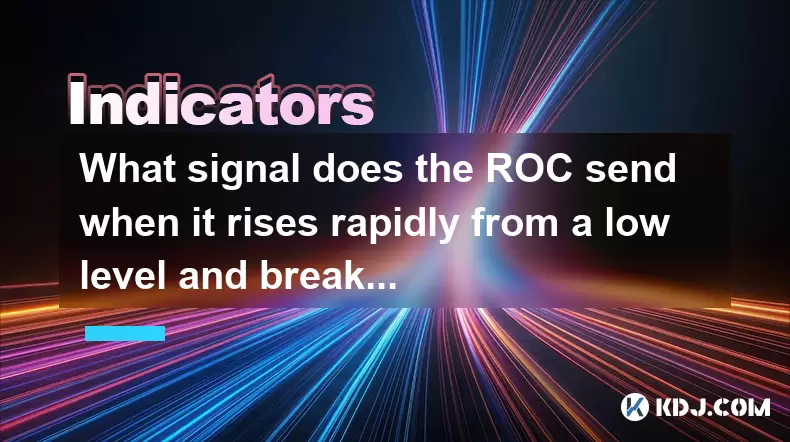
What signal does the ROC send when it rises rapidly from a low level and breaks through the zero axis?
Jul 27,2025 at 10:15am
Understanding the Rate of Change (ROC) IndicatorThe Rate of Change (ROC) is a momentum-based oscillator used in technical analysis to measure the perc...
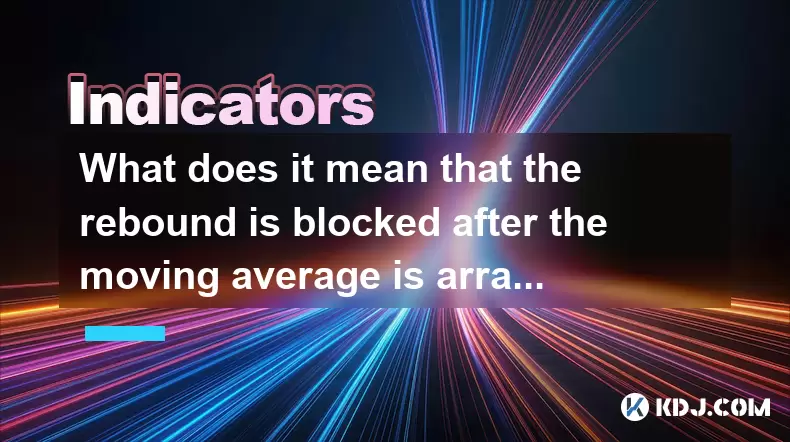
What does it mean that the rebound is blocked after the moving average is arranged in a short position for the first time?
Jul 26,2025 at 10:51am
Understanding the Short-Term Moving Average ConfigurationWhen traders refer to a 'short position arrangement' in moving averages, they are describing ...
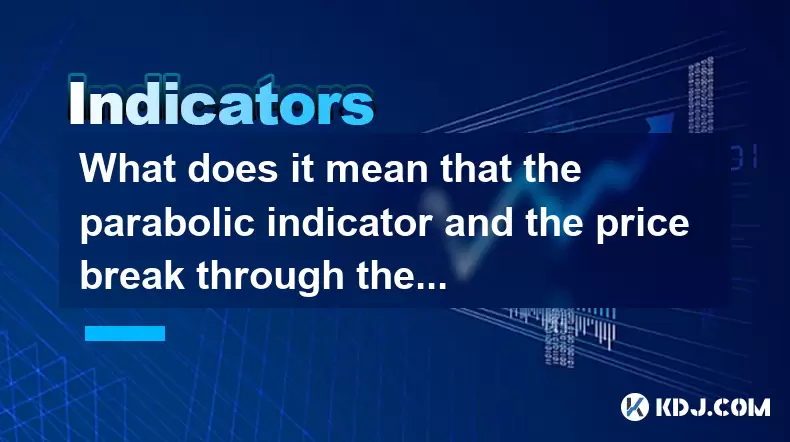
What does it mean that the parabolic indicator and the price break through the previous high at the same time?
Jul 26,2025 at 07:22pm
Understanding the Parabolic Indicator (SAR)The Parabolic SAR (Stop and Reverse) is a technical analysis tool developed by J. Welles Wilder to identify...
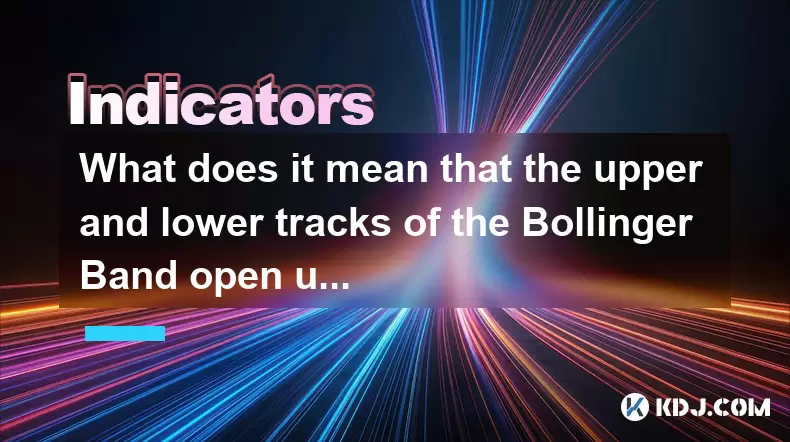
What does it mean that the upper and lower tracks of the Bollinger Band open upward at the same time?
Jul 27,2025 at 02:49pm
Understanding the Bollinger Band StructureThe Bollinger Band is a widely used technical analysis tool developed by John Bollinger. It consists of thre...
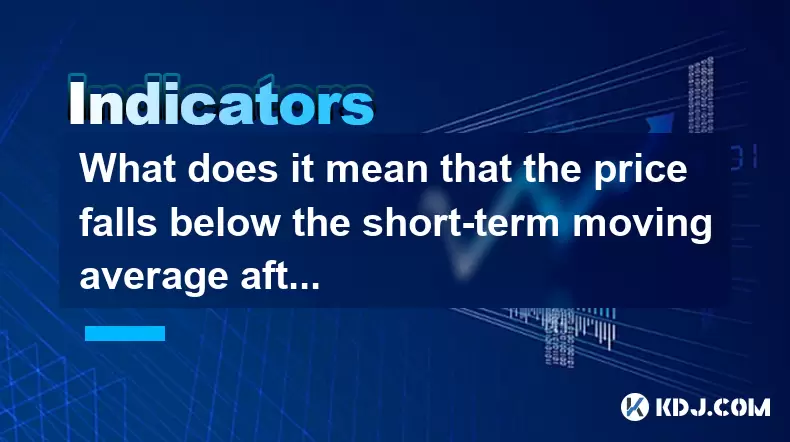
What does it mean that the price falls below the short-term moving average after the RSI top divergence?
Jul 26,2025 at 11:01pm
Understanding RSI Top Divergence in Cryptocurrency TradingThe Relative Strength Index (RSI) is a momentum oscillator widely used in cryptocurrency tra...
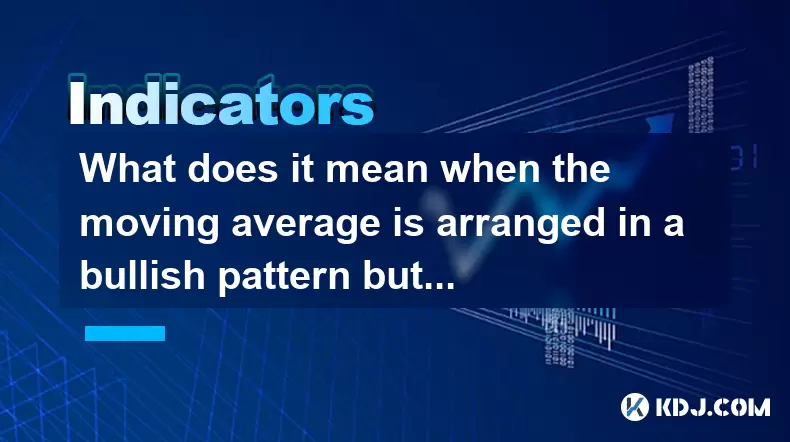
What does it mean when the moving average is arranged in a bullish pattern but the MACD bar is shortened?
Jul 27,2025 at 06:07am
Understanding the Bullish Moving Average PatternWhen traders observe a bullish moving average pattern, they typically refer to a configuration where s...

What signal does the ROC send when it rises rapidly from a low level and breaks through the zero axis?
Jul 27,2025 at 10:15am
Understanding the Rate of Change (ROC) IndicatorThe Rate of Change (ROC) is a momentum-based oscillator used in technical analysis to measure the perc...

What does it mean that the rebound is blocked after the moving average is arranged in a short position for the first time?
Jul 26,2025 at 10:51am
Understanding the Short-Term Moving Average ConfigurationWhen traders refer to a 'short position arrangement' in moving averages, they are describing ...

What does it mean that the parabolic indicator and the price break through the previous high at the same time?
Jul 26,2025 at 07:22pm
Understanding the Parabolic Indicator (SAR)The Parabolic SAR (Stop and Reverse) is a technical analysis tool developed by J. Welles Wilder to identify...

What does it mean that the upper and lower tracks of the Bollinger Band open upward at the same time?
Jul 27,2025 at 02:49pm
Understanding the Bollinger Band StructureThe Bollinger Band is a widely used technical analysis tool developed by John Bollinger. It consists of thre...

What does it mean that the price falls below the short-term moving average after the RSI top divergence?
Jul 26,2025 at 11:01pm
Understanding RSI Top Divergence in Cryptocurrency TradingThe Relative Strength Index (RSI) is a momentum oscillator widely used in cryptocurrency tra...

What does it mean when the moving average is arranged in a bullish pattern but the MACD bar is shortened?
Jul 27,2025 at 06:07am
Understanding the Bullish Moving Average PatternWhen traders observe a bullish moving average pattern, they typically refer to a configuration where s...
See all articles

























































































